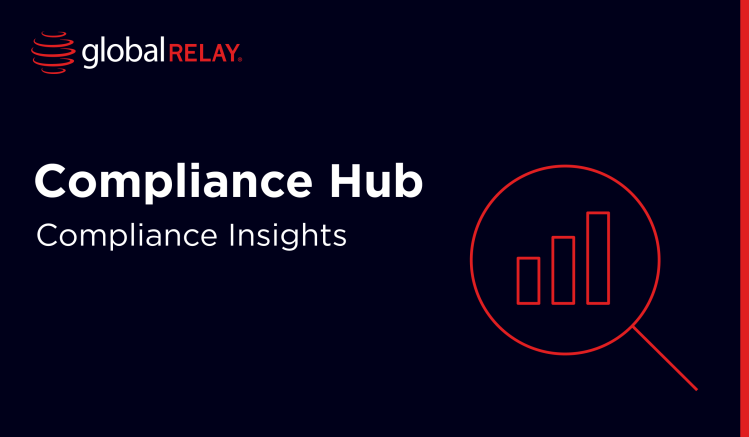
Reporting requirements
Depending on the regulation, reporting requirements can have your firm feeling like they’re bending over backwards to meet compliance demands. ‘Disclose suspicious transactions’, ‘register Beneficial Ownership information’, ‘present employee diversity figures’ … the list goes on.
Written by a human
Take control over reporting requirements by learning about the most common challenges for regulated companies, and how to overcome them.
Common reporting requirement challenges
Regulated companies often face the same challenges as they attempt to meet annual report requirements in the most effective, optimized and compliant way:
- Lack of resources for data gathering
- Confusion over information disclosure
- No stakeholder buy-in
- Poor quality reporting
Lack of resources for data gathering
Data gathering is an expensive task, especially in regulated businesses that face significant legal repercussions in the event of deficiencies. In fact, the average cost of data collection for regulatory purposes in 2024 totaled 2-6% of overall revenue.
Without investing into the data gathering process, organizations are confronted with issues like:
- Misinformed compliance plans
- Lack of visibility for business goals and progress towards them
- Inefficient spending
- Failure to properly track employee actions
Overcoming this challenge does depend on the regulations affecting a business, as some have specific or exact compliance requirements. However, in the case that the scope of regulations aren’t as clear cut, it’s important to set an overall culture of compliance throughout every level of the business.
One real life case study occurred at a financial institution in Canada where poor data management was blamed for serious non-compliance with regulatory requirements, wrongly revealing sensitive information and duplicating account tokenisation. The bank committed to an investment into the data gathering process, and developed a solution across 10 months in order to rectify their errors.
The new rules-based information collection system transformed the institution’s compliance, and reduced the risk of penalties associated with violations.
By pledging enough money towards data gathering, regulated companies can maintain total oversight within the business and ensure nothing slips through the cracks.
Confusion over information disclosure
Reporting requirements often include situations for information disclosure, but these can be confusing. Compliance professionals and their colleagues can frequently get confused over:
- Which situations to disclose information
- What types of information should be disclosed
- How to disclose data without violating data protection legislation
For example, in one recent case study, a job application form asked applicants to confirm whether they were subject to probation, court orders or public protection arrangements. However, this wrongly encouraged the disclosure of spent convictions, where there is no legal basis for the applicant to provide such information, and for the organization to hold it. It’s therefore key for companies with reporting requirements to set clear boundaries and standard practices around information disclosure. For even better compliance, remove the manual aspect of reporting and instead rely on an automated solution, such as Global Relay’s communication surveillance
No stakeholder buy-in
Stakeholder buy-in can be a challenge for reporting requirements, as without it, the entire organization may not take compliance seriously enough. With the majority of compliance demands at managerial level, buy-in is required from these stakeholders in order for the proper information to be reported.
Without it, companies can commit both accidental and intentional violations.
Overcome a lack of stakeholder buy-in through creating a culture of compliance across every level of your organization. To achieve this, successful case studies have recommended regular and engaging employee training sessions in order to demonstrate the value of compliance to individual and organization alike.
Poor quality reporting
Poor quality reporting is another key challenge associated with reporting requirements, as it can impact overall compliance, and possibly lead to enforcement action.
In a milestone case, the FCA fined Goldman Sachs £34.3million for their failures to provide accurate and timely reports with regards to over 220 million transactions across 10 years. Alongside these failings, the FCA found that the business erroneously reported over six million transactions under the MiFiD rules.
For guaranteed compliance to reporting requirements, automated software is stronger than relying on manual controls. Ensure that nothing falls through the cracks with an AI-powered data archive, fully searchable, across all communication channels.
How to best identify and meet reporting requirements
Every business is different, which means that there’s no blanket approach to reporting requirements for regulations. Teams must consider factors like company size, registered representatives and regulatory demands before they can approach a compliance plan.
Fortunately, done-for-you solutions like Global Relay’s communications capturing service can provide some relief. Keeping firms ahead of evolving reporting requirements, we provide integrated solutions for every step of the regulatory journey. Book a demo to learn more.
FAQs
What are reporting requirements?
Reporting requirements govern how regulated companies must disclose certain information to the public or the rule-makers themselves. Reporting requirements are important because they hold organizations accountable to industry standards, help to maintain the integrity of the financial markets, and provide a way for customers to compare various providers and their products.
What is an example of a reporting requirement?
Suspicious transactions are one example of a reporting requirement under the Market Abuse Regulation (MAR). They exist to flag the possibility of insider trading, and transactions are deemed ‘suspicious’ when the manipulation of devices or misuse of information is discovered.
